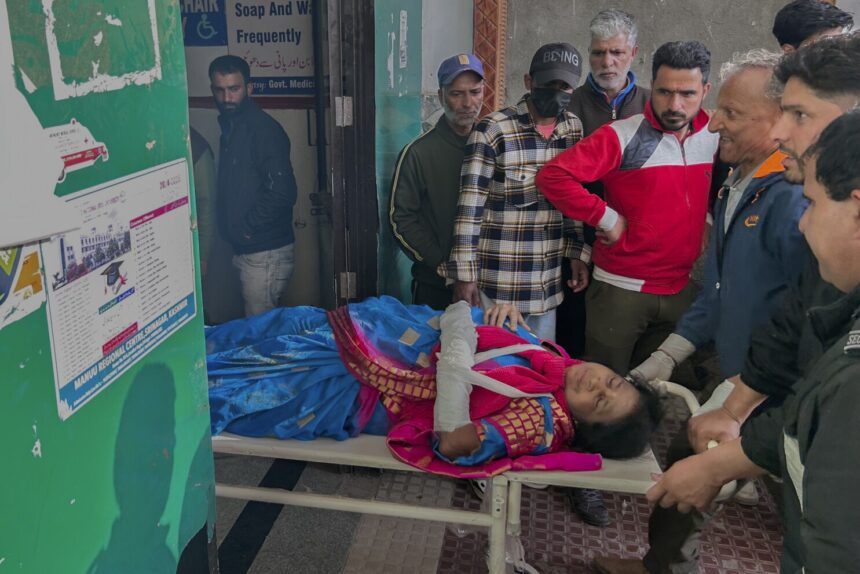The tranquil meadows of Baisaran near Pahalgam, often called ‘Mini-Switzerland’ for their breathtaking beauty, were shattered by violence on April 22, 2025, when heavily armed terrorists opened fire on tourists, killing 26 people and wounding many more. This attack, the deadliest on civilians in Kashmir since the abrogation of Article 370 in 2019, has sent shockwaves through the region and across India, raising urgent questions about security, cross-border infiltration and the future of Kashmir’s fragile peace and tourism economy.
The Attack: Meticulous Planning and Ruthless Execution
Investigations have revealed that the assault was meticulously planned and executed by a group of at least four to five terrorists, including three Pakistani nationals and one local militant, Adil Hussain Thoker. The attackers trekked for nearly 22 hours through rough, mountainous terrain from the Kokernag forests to the remote Baisaran valley, a journey that exploited the area’s non-motorable landscape and delayed any timely security response. Once at the site, the terrorists conducted a thorough reconnaissance, studying tourist flow and security response times. They launched their attack at a time when the area was crowded with visitors, ensuring maximum casualties.
Eyewitness accounts and video evidence, including a crucial recording by a local photographer perched atop a tree, have helped reconstruct the sequence of events. The attackers, armed with AK-47s and US-made M4 carbines, reportedly emerged from behind shops and the zipline area, targeting tourists at close range. Some victims were forced to recite religious verses before being executed, indicating a deliberate attempt to inflame communal tensions. The brutality of the attack, coupled with the attackers’ military-style uniforms and sophisticated weaponry, points to a high degree of training and coordination.
The Network: Local Facilitation and Cross-Border Conspiracy
The probe has uncovered a web of local support that enabled the Pakistani terrorists to infiltrate and operate in Kashmir. At least fifteen local overground workers (OGWs) have been identified for providing logistical support, arranging arms consignments from Pakistan, and guiding the attackers through the region’s treacherous terrain. Electronic surveillance intercepted communications among the OGWs discussing how to ‘Help’ the Pakistani terrorists in Pahalgam. Three of these facilitators have been detained, while others remain at large.
Central to the operation was Adil Hussain Thoker, a local from Anantnag district who became radicalized during his college years and crossed into Pakistan in 2018. There, he received battle-hardened training with Lashkar-e-Taiba before returning to the Valley in 2024, acting as a guide and logistics provider for the foreign terrorists. The attackers are believed to have carried out an extensive recce of Baisaran, planning their escape routes and studying the security layout.
Authorities have released sketches of at least three terrorists and announced rewards for information leading to their arrest. The involvement of senior Lashkar commanders, including Saifullah Kasuri, a close aide of 26/11 mastermind Hafiz Saeed, is also under investigation.
The Investigation: NIA Steps In, Evidence Mounts
The National Investigation Agency (NIA) has formally taken over the probe, intensifying evidence collection and forensic analysis at the site. Teams led by senior officers are examining eyewitnesses, including a Lieutenant Colonel of the Indian Army who provided critical testimony after ensuring his family’s safety during the attack. Survivors and detained OGWs are being questioned, and digital footprints have been traced to safehouses in Muzaffarabad and Karachi, suggesting a control-room style operation reminiscent of the 26/11 Mumbai attacks.
Security forces have launched massive combing operations in the forests around Pahalgam, coming close to cornering the attackers on several occasions, but the dense terrain and local support have allowed the terrorists to evade capture so far. The attackers are reportedly exercising extreme caution in arranging supplies, relying on trusted contacts to avoid detection.
Motive and Impact: Ideological Messaging and Economic Fallout
The Resistance Front (TRF), an offshoot of Lashkar-e-Taiba, has claimed responsibility for the attack, citing opposition to the issuance of domicile certificates to non-locals-a move they claim threatens the region’s demographic balance. While security agencies are still verifying these claims, the ideological motive appears to be both communal and political, aimed at destabilizing the region and derailing the narrative of peace and normalcy.
The timing of the attack is particularly significant, coming just weeks before the annual Amarnath Yatra and amid a surge in tourism after years of relative calm. The immediate aftermath has seen a devastating blow to Kashmir’s tourism industry, with up to 80 percent of bookings canceled and widespread fear among travelers and locals alike. The local economy, heavily dependent on tourism, faces a severe setback, with hoteliers and business owners expressing deep concern but also resilience and hope for recovery.
Broader Implications: Security, Diplomacy and Communal Harmony
The Pahalgam terror attack has far-reaching implications for security, diplomacy and social cohesion in Kashmir and beyond. It exposes critical gaps in counterterrorism frameworks, challenges the narrative of post-Article 370 stability and risks triggering communal polarization due to the targeted nature of the killings. The attack has also strained India-Pakistan relations, with New Delhi accusing Islamabad of supporting cross-border terrorism and taking punitive diplomatic measures in response.
Despite the tragedy, the people of Kashmir have demonstrated remarkable unity and resolve, observing shutdowns and expressing collective grief. Security agencies remain determined to bring the perpetrators to justice and the NIA’s ongoing investigation is expected to yield further breakthroughs in the days ahead.
The Pahalgam attack stands as a grim reminder of the persistent threat of terrorism in Kashmir, even as the region aspires for peace and prosperity. It underscores the urgent need for vigilance, robust security measures, and continued efforts to counter radicalization and cross-border infiltration-ensuring that the valley’s beauty and its people’s dreams are not held hostage by violence.







